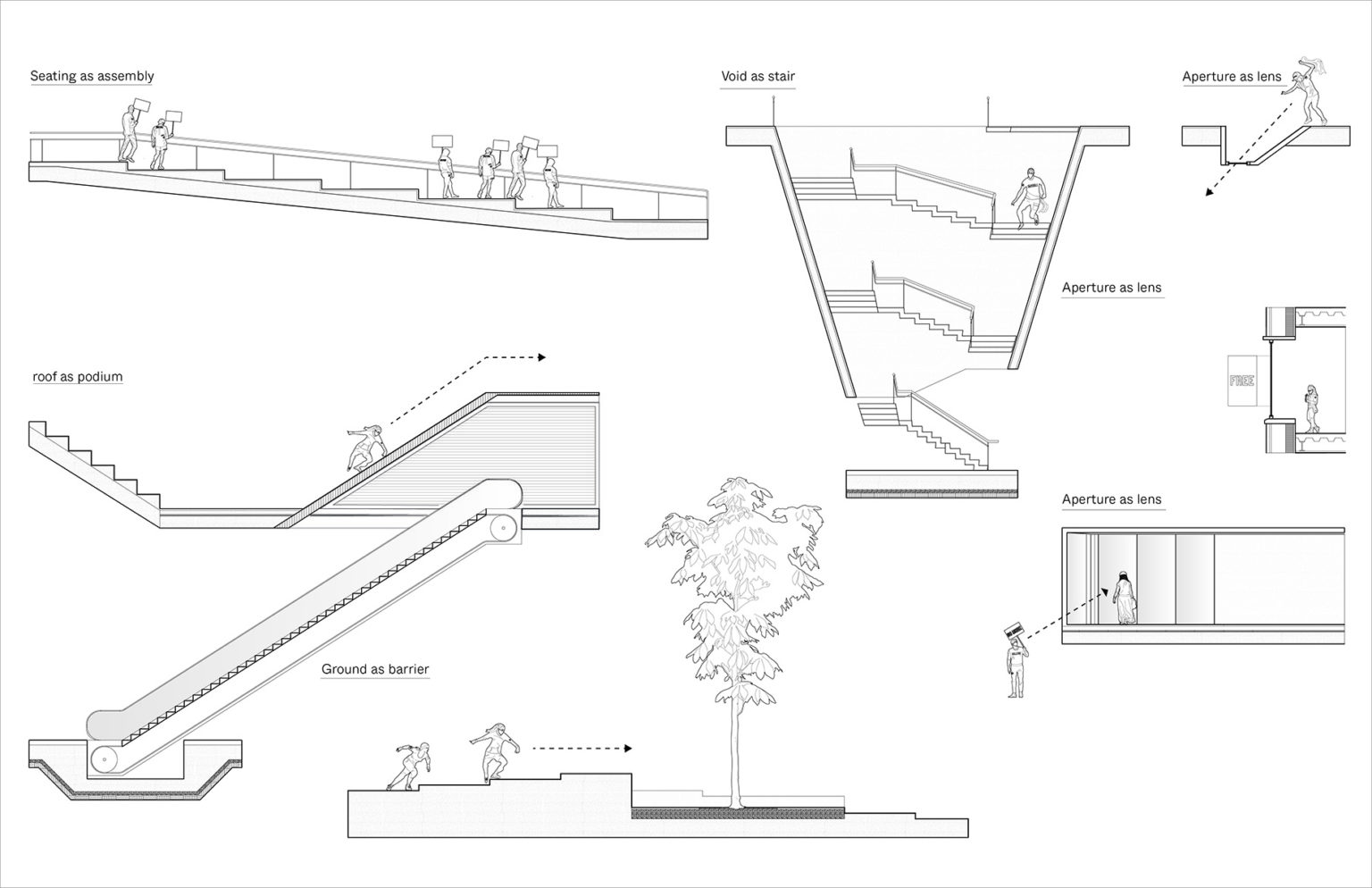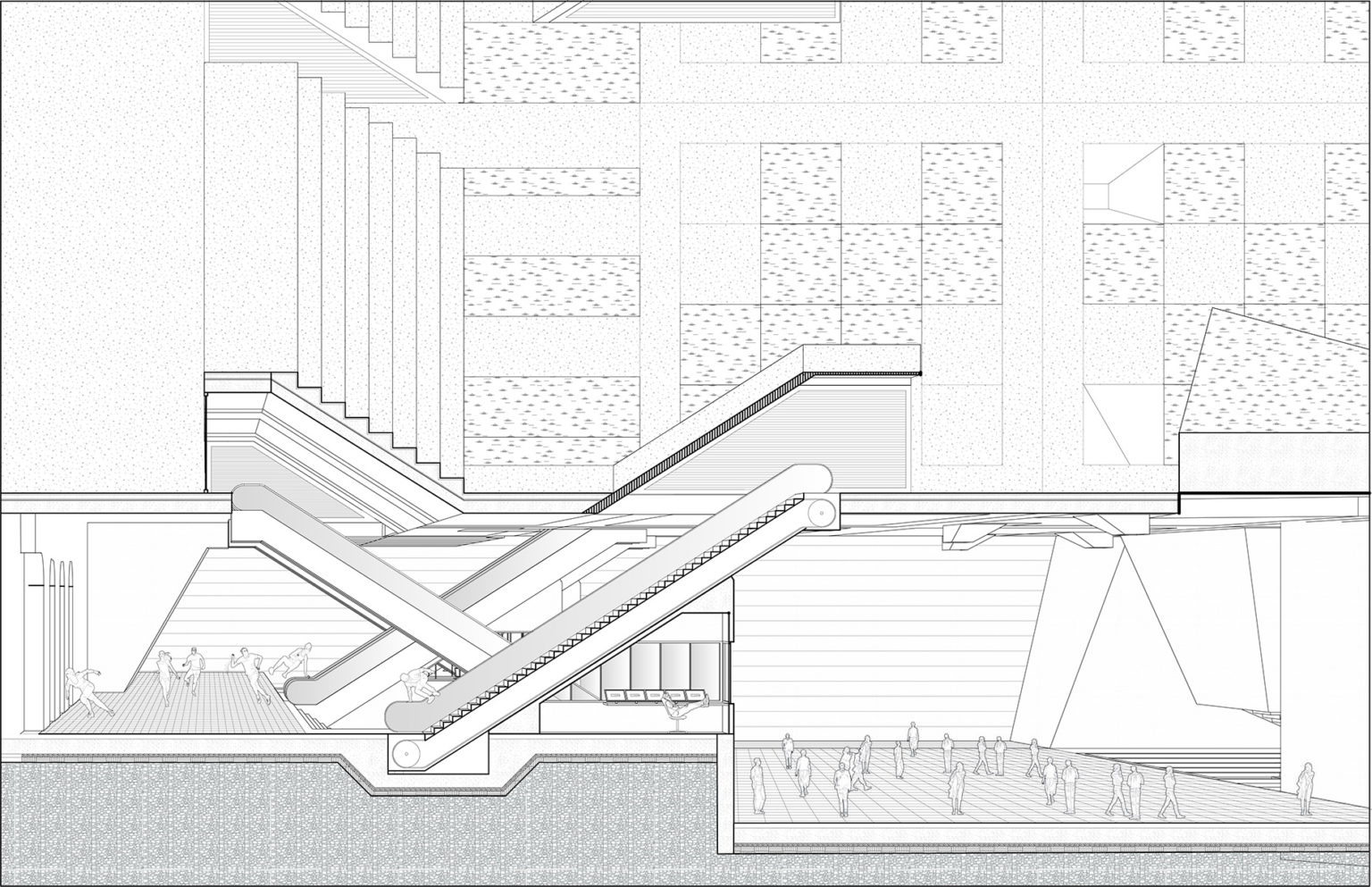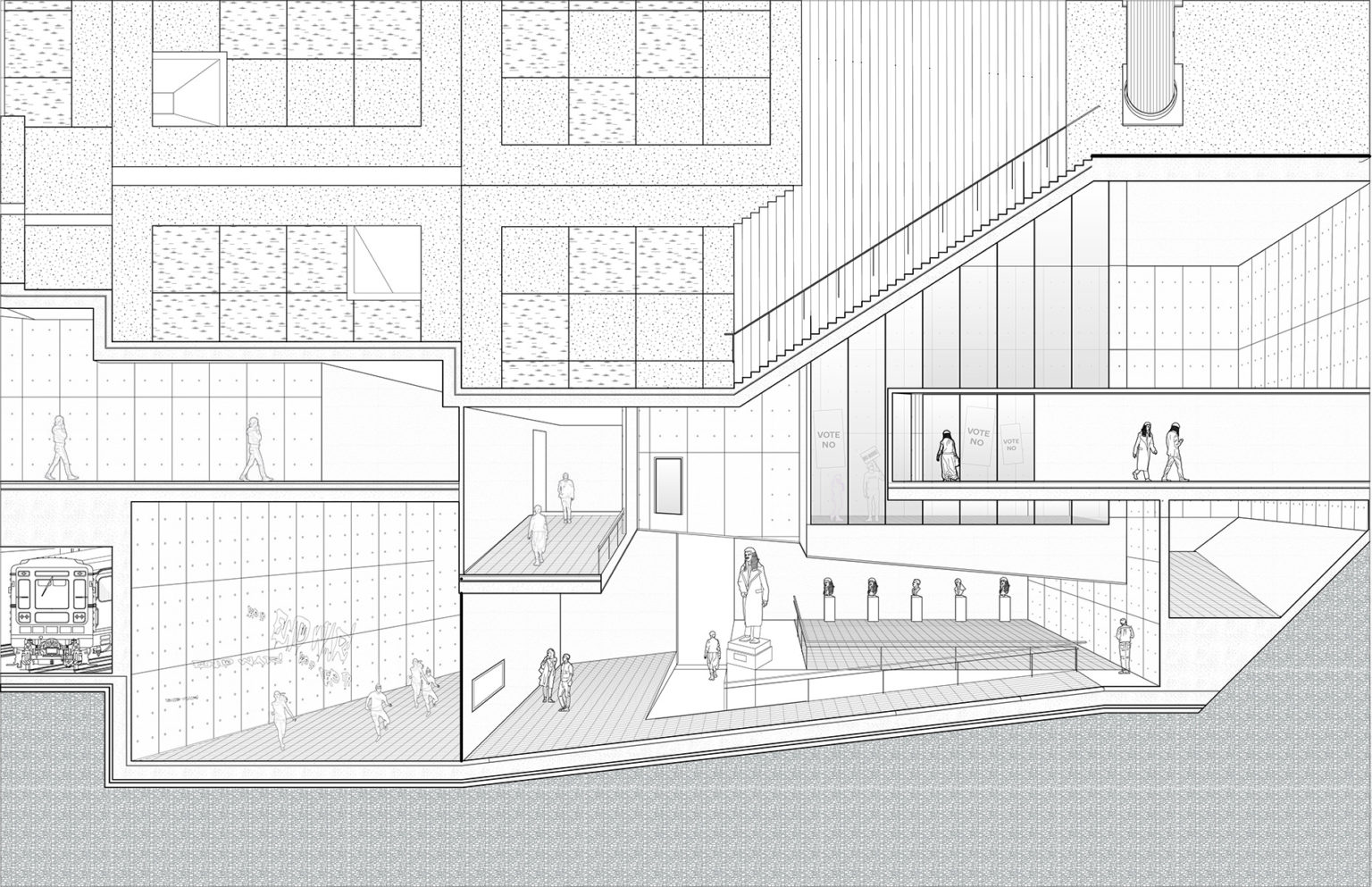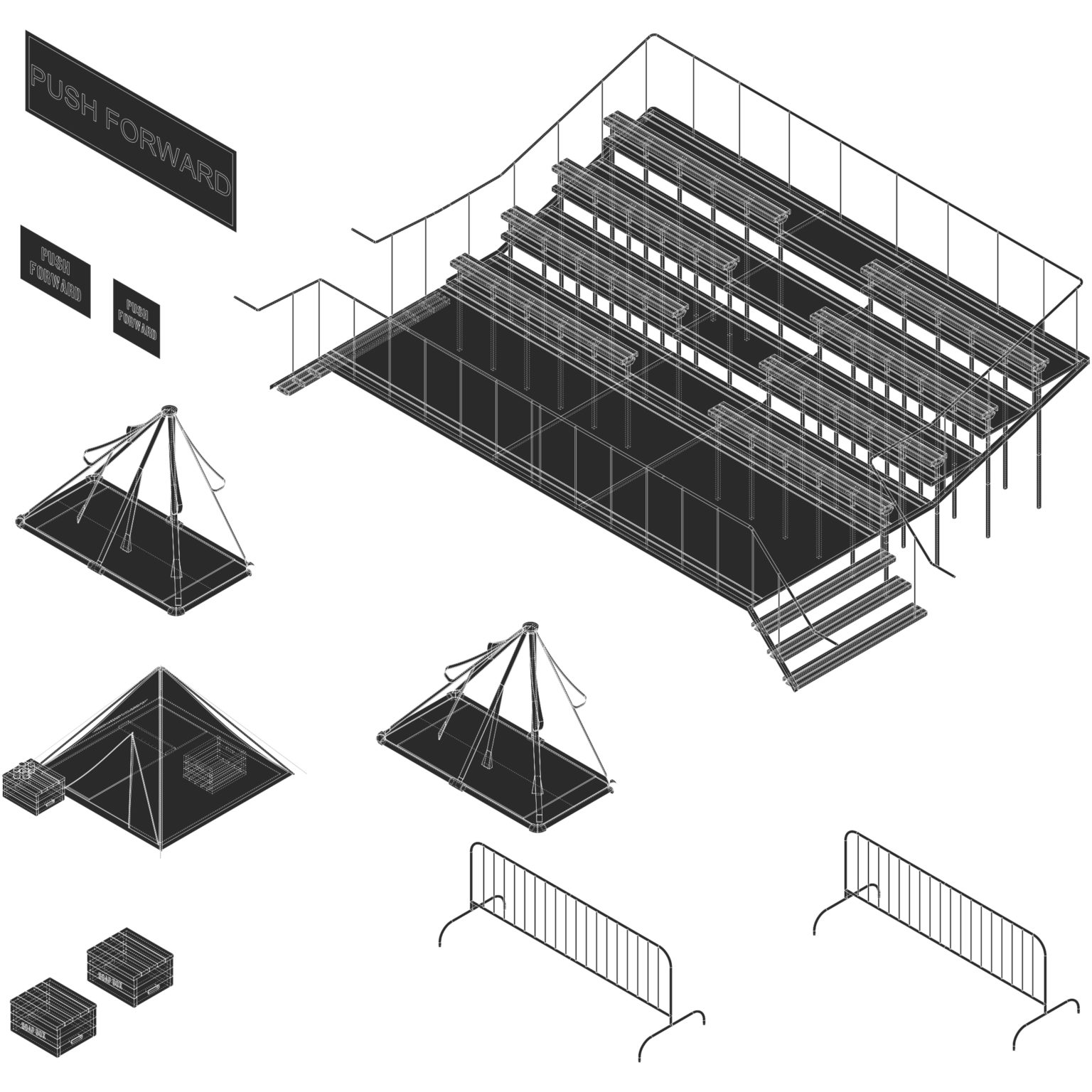Domus Populi
Daniel Infante & Safa Mehrjui
Degree Project 503
Studio Critics
Michael Szivos, Abigail Coover Hume, Ashley Simone
Can architecture be designed and/or appropriated to support and participate in activism? How can architects take on the role of a double agent by engaging architecture as a form of activism?
Degree Project 503
Studio Critics
Michael Szivos, Abigail Coover Hume, Ashley Simone
Can architecture be designed and/or appropriated to support and participate in activism? How can architects take on the role of a double agent by engaging architecture as a form of activism?
Links
d.mi.infante@gmail.com
smehrjui@pratt.edu
Artist Statement
The project comprises both plaza and building. It operates as a thickened surface with a program embedded in a hill-scape that rises to engage with existing buildings, creating critical moments of programmatic adjacency. The development of the design is integral to an understanding of the peaks and valleys that can create confrontations between the private (offices, city council assembly, higher courts) and public (plaza) space. Specific characteristics, which meet the design criteria for intensely confrontational spatial adjacencies, include visual and auditory connection between disparate user groups, those serving the State and the constituents of Domus Populi. However, the double-agent architects avoid designing these moments in a manner that is singular or attention-seeking. By sporadically infusing the site with critical adjacencies, the architects test the ways in which confrontation can become an unavoidable and pervasive condition, causing continuous disruption. This gives activists and demonstrators gaps of freedom for placing critical stages for political action.
Domus Populi






